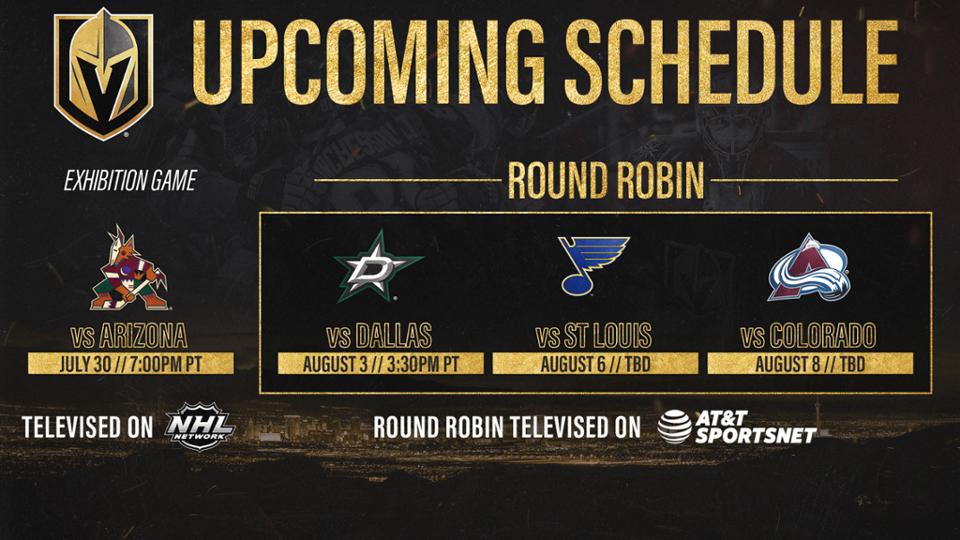It seems like it’s been eons since we all watched our last hockey game. It’s been months since Golden Knights fans stepped into T-Mobile arena, since we got to see Ryan Reaves check someone into the boards, and since we heard our favorite sound: the VGK goal horn.
Starting on August 1, however, hockey is back. And not just any hockey. It’s Stanley Cup playoff hockey, baby!
Unlike previous years, this year’s playoff structure is a little more crowded, to say the least. Instead of 16 teams fighting in best-of-seven game series to get to the finals, there are now 24 teams.
How in the world will that work?
It’s actually going to be similar to the Stanley Cup playoffs that we’re used to, except now they are adding in a round robin/qualify round to the mix.
What is a Round Robin?
During the normal season, teams collect a number of points. If you win a game in regulation, your team gets two points. Win a game in overtime, and your team gets one point. Lose a game, and your team doesn’t receive any points.
Those points accumulate over the season, and help determine the division champions as well as where other teams in the conference rank. For the 2019-2020 playoff season, the top four teams for both conferences will play three games each to determine seeding for the First Round.
The team who achieves the top seed will then play the team who scores the least amount of points in the qualifying round, so it’s really advantageous to strive for that top seed position.
What is the Qualifying Round?
The next best eight teams per conference will meet for the Qualifying Round. This round will determine if they make it to the First Round of the Stanley Cup playoffs.
The Qualifying Round will be four match-ups per conference, each game being a best-of-five series. The teams who lose will not advance, and those who win advance to the First Round.
First Rounds, Second Rounds, Conference Finals and Stanley Cup
Now this is where the Stanley Cup playoffs make more sense. The teams who made it through the Qualifying Round will be matched up with those seeded Round Robin teams for the First Round.
Eight teams per conference means four match-ups. The First Round will be a best-of-seven series. Those who win the best-of-seven advance to the Second Round.
In the Second Round, there will be four teams left per conference, which means two match-ups. This too will be a best-of-seven series, and then there will be two teams remaining for each conference.
Those two teams will compete to see who will be the conference champions. The conference champions will then go head-to-head to compete for the Stanley Cup.

The Vegas Golden Knights have their first Round Robin game on Monday, August 3, when they take on the Dallas Stars in Edmonton. They will then face the St. Louis Blues on August 6, and the Colorado Avalanche on August 8.
Vegas Golden Knights Round Robin games will be broadcasted on ATT Sportsnet RM in the Las Vegas market, and NHL Network in the rest of the U.S.
